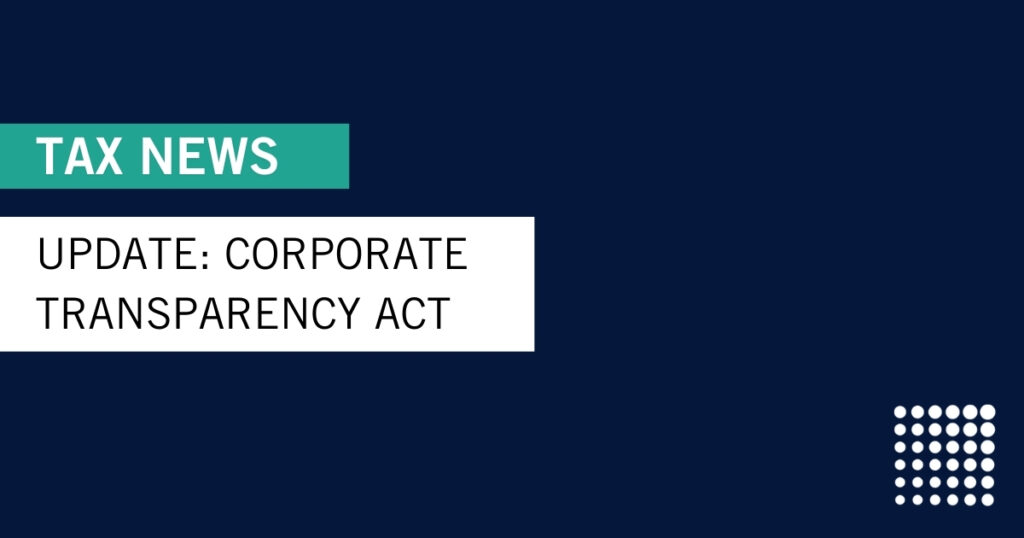The key things to know about PPP1 and PPP2, EIDL, ERC and HHS in one place
As both a business owner and dentist, it is difficult to keep all the laws straight. This article summarizes the programs available to business owners during 2020 and early 2021.
EIDL Loans
The Economic Injury Disaster Loan (EIDL) program, administered by the Small Business Administration (SBA), has existed for many years and is frequently leveraged by small businesses impacted by natural disasters such as wildfires, hurricanes and tornados.
Many practice owners leveraged this in 2020 through one of two programs:
EIDL Grant Program
- EIDL grants were tax-free grants created by the CARES Act passed in March 2020.
- The grants were limited to $1,000 per employee, up to $10,000 cap per business.
- These grants were able to be used for any expense allowed by an EIDL loan, as defined below.
- In its initial form, this grant reduced the forgiveness of the initial round of Paycheck Protection Program (PPP1) loans borrowed and the amount was required to be paid back to the SBA. This has since changed.
- The new Consolidated Appropriations Act (CAA) legislation repeals the reduction in PPP1 forgiveness for these EIDL grants, which means that for PPP borrowers, this money no longer needs to be paid back and is a tax-free grant.
- Some borrowers have already received forgiveness for their PPP1 loans and repaid their grants back to the SBA (before the CAA legislation was passed). There has yet to be clarification from the SBA on how this will be rectified.
- There are currently no reporting requirements for EIDL grants.
- Additional grants became available under the CAA passed in December 2020 for small businesses in low-income areas that experienced a decrease of 30% or more in collections over an 8-week period starting March 2, 2020.
EIDL Loan Program
- This program was available to small businesses impacted by the coronavirus in addition to the EIDL grant. If you received a COVID-19 EIDL loan:
- These funds can be used for working capital and normal operating expenses for businesses.
- They cannot be used for the expansion of a business or to pay off existing debts.
- These are true loans and are not forgiven.
- Payments are deferred for one year, but interest accrues from date of the note. You can elect to make payments in the first year.
- The loan has a maturity of 30 years, a fixed interest of 3.75%, and no prepayment penalty.
- From a reporting standpoint, the SBA recommends keeping these funds in an account separate from your operating accounts, and to maintain “current and proper” records.
PPP1 & PPP2 Programs
The PPP program was introduced by the CARES Act in March 2020 and was modified by the PPP Flexibility Act (PPPFA) passed in June 2020. Since then, the PPP program has been clarified, adjusted and modified by a series of interim final rules (IFRs), which have also modified the terms and stipulations. Most recently, the CAA dramatically loosened the parameters of the program, making it easier for borrowers to qualify for forgiveness and/or qualify for a second round of PPP funds (PPP2).
Here is the latest on the PPP programs:
- Eligibility
- For the PPP1 program, most small businesses in existence as of February 15, 2020, and impacted by the coronavirus were eligible.
- For the PPP2 program, small business borrowers are only eligible if the borrower:
- Previously received a PPP1 loan and will use, or has used, the entire loan for qualified expenses
- Has no more than 300 employees
- Can demonstrate a 25% or greater reduction in gross receipts for the business entity when comparing any quarter in 2020 to that same quarter in 2019.
- Borrowers can apply under both programs until March 31, 2021.
- Amount Received
- The loan calculation under PPP1 and PPP2 is identical. It represents 2.5 times monthly average payroll costs, which is defined as wages paid to employees (capped at $100,000), employer share of non-owner/family retirement plan funding and employer share of non-owner/family health insurance.
- For both PPP programs, the default period to use for this calculation is 2019 annual numbers.
- If the business was not in existence in 2019, the required period to use is payroll costs from January to February 15, 2020.
- For the PPP2 program, borrowers can choose to use 2020 payroll costs if they were higher than 2019. In most cases, 2019 payroll data will be more beneficial to use since most practices laid off employees during the shutdown period.
- Rules on Use of PPP Proceeds
- PPP proceeds can be used for any defined “qualified expenses,” which include payroll costs, defined as wages paid to employees (up to a prorated amount capped at $100,000 in annual salary), employer share of non-owner/family retirement plan funding, employer share of non-owner/family health insurance, rent expense, business loan interest, or utilities. The CAA also added supply costs and/or PPE costs as qualified expenses.
- At least 60% of the proceeds must be spent on payroll costs, as defined above.
- Borrowers can use the proceeds for qualified expenses by choosing anywhere between an 8-week or 24-week period from receipt of the PPP funds.
- Due to the ERTC, which is discussed below, CWA recommends electing the 24-week period to ensure forgiveness is maximized.
- PPP Forgiveness
- The loan is 100% forgiven if used on qualified expenses and your full-time equivalent employees (FTE) have not been reduced during your covered period, you have documentation of them leaving due to COVID-19, or you restore the same number of FTE’s by September 30, 2021.
- The CAA changed the IRS ruling and states tax deductions are now allowed for forgivable expenses.
- Forgiveness applications are due 10 months after the end of the covered period of the loan. For most practices this will be 10 months after the end of their 24-week period.
- Forgiveness is no longer reduced by EIDL grants received.
- You can apply for PPP2 before submitting your PPP1 forgiveness application. Should your lender require a forgiveness application prior to applying for PPP2, you need to push back, apply for forgiveness, or find another bank to do your PPP2 loan.
- Borrowers are not required to use the same bank for each round.
- If your loan is $150,000 or less, you should apply for forgiveness with the new simplified one-page application. You are no longer required to submit expenses to prove forgiveness but need to keep the qualified expenses for your records for 6 years. You need to coordinate your records with wages utilized in the ERC described below.
- If your loan amount was above $150,000, we recommend waiting to apply for forgiveness since you will now need to coordinate payroll expenses with the Employer Retention Credit (ERC) described below. CWA recommends using your tax advisor for applications above $150,000.
- Repayment
- For unforgiven amounts, repayment can be:
- Either 2 years if the funds were dispersed prior to June 5, 2020, or 5 years if dispersed after June 5, at an interest rate of 1%, or, immediately repaid upon determination of forgiveness.
- For unforgiven amounts, repayment can be:
Employee Retention Credit (ERC)
The original ERC was largely irrelevant since PPP borrowers were unable to claim the credit. However, the recent CAA legislation made the ERC retroactive to March 12, 2020 and allows PPP borrowers to claim the credit and receive PPP loan forgiveness.
- There are two ways to qualify for the retroactive ERC:
- Method 1: You had a mandatory shutdown order issued by your local government. Most state governments ordered a mandated dental closure. However, we have found some states in which a closure was only recommended.
- Method 2: You experienced a drop of 50% or more in your collections from a comparable 2020 quarter to a 2019 quarter. For most practices this will likely be based on Q2 2020 compared to Q2 2019.
- The ERC is 50% of eligible wages, up to $10,000 per employee for a cap of $5,000 per employee in tax credits. You cannot use the same wages for PPP forgiveness and the ERC.
- If your practice collections were not down 50% or more but had a mandated closure, then the credit will be for actual wages paid from the date of your shutdown to the date you could begin performing elective procedures. You should not use these wages when applying for PPP forgiveness.
- If your practice collections were down 50% or more in any quarter of 2020 compared to the same quarter of 2019:
- You will have to coordinate payroll between PPP1 forgiveness and the ERC since the same wages cannot be claimed for both programs.
- Under this scenario, you will want to first claim the ERC with wages paid during the period from the office closure through Q3 of 2020.
- Wages per employee above $10,000 (after the ERC is maximized based on the above limit) should be used for PPP purposes.
- This may require a borrower to include other payroll costs, utilities, rent, or other qualified PPP expenses to maximize forgiveness.
- Rules on claiming the credit are still not released, but we expect it to be claimed on your Q1 2021 or Q2 2021 IRS Form 941 (Quarterly Payroll Tax Return).
- You will have to coordinate payroll between PPP1 forgiveness and the ERC since the same wages cannot be claimed for both programs.
- Calculating the credit based on both method 1 and 2 can be confusing. Our advisors walk through two examples in our latest webinar.
- The CAA extended the ERC through June 30, 2021.
- You will not know if you qualify until after March 31, 2021.
- If you are down 20% or more in Q1 or Q2 of 2021 compared to the same quarter in 2019, then you are eligible for a 70% tax credit ($7,000 per employee) up to the maximum of $10,000 wages per employee per quarter.
- You could potentially claim this for Q1 and Q2, meaning a total credit of up to $14,000 per employee if there are enough qualified wages.
- You will need to review in April and July of 2021 to see if you qualify.
- You will not know if you qualify until after March 31, 2021.
HHS Provider Relief Program
Although initially not applicable to the dental industry, the CARES Act allocated relief funds to the Department of Health & Human Services (HHS) designed to help stimulate hospitals, health care providers and front-line workers combat the virus.
- Most eligible dental providers received 2% of their 2019 collections and may even have applied and received a second round of funding, although the amounts may have been different.
- The deadline for reporting has been delayed several times and now is under an “indefinite delay” per the HHS website.
- The HHS website does allow you to “register” for reporting but does not allow you to submit any data yet.
- Due to this delay, no action is required at this time.
- There is a simplified application for funds received of $10,000 or less.
- Most practices received more than this amount.
- We are hopeful the HHS application threshold gets increased, as we saw with the limits on simplified PPP forgiveness applications.
- These funds can be used for PPE related expenses as well as “lost revenue.”
- The definition for “lost revenue” has been expanded to include not only a decline in revenue, but also a decline in growth.
- For example, if you can show that you were growing at 5% and then experienced a 20% decrease, the eligible amount would be 25% (the 20% actual decline plus the lack of the 5% historical growth).
- After receiving the HHS Provider Relief stimulus funds, applicants must confirm receipt and amount of the funds, and agree to the terms and conditions set forth by HHS pursuant to the CARES Act.
- It appears changes are becoming more liberal. We are hopeful dental professionals will be able to easily apply for full qualification when the window opens.
- These funds are not a loan or a grant. As a result, all HHS proceeds are fully taxable.
FFCRA Paid Leave Requirements
- The Families First Coronavirus Response Act (FFCRA) was extended through March 31, 2021 and is optional for employers during Q1 of 2021.
- Additional details on the FFCRA can be found on our blog.
Business Meals Deduction
- For 2021 and 2022, business meals are now 100% fully deductible, instead of only being 50% deductible.
- Entertainment expenses, like a sporting event or tickets to a show, are still non-deductible. Make sure you keep all itemized receipts for any business meals.
As new guidance related to these programs is released, you can count on the Cain Watters team to provide additional updates. Stay up to date at cainwatters.com/digitalblogs.














